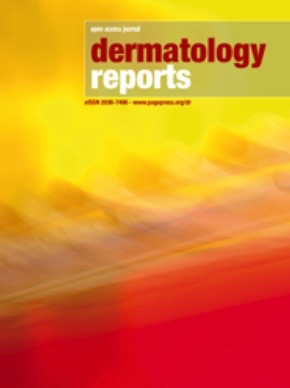Gemcitabine, a rare cause of chemotherapy-related reticulate hyperpigmentation
All claims expressed in this article are solely those of the authors and do not necessarily represent those of their affiliated organizations, or those of the publisher, the editors and the reviewers. Any product that may be evaluated in this article or claim that may be made by its manufacturer is not guaranteed or endorsed by the publisher.
Authors
Reticulate pigmentary disorders can be classified into inherited or acquired and cutaneous drug-induced reticulate hyperpigmentation belongs to this last group. The list of the drugs involved is constantly increasing and chemotherapy agents are frequently implicated. We report a new case of chemotherapy-related reticulate hyperpigmentation to gemcitabine, even though a previous chemotherapy with nanoparticle, albumin-bound (Nab®) paclitaxel and gemcitabine may have promoted the onset of the disease. Reassurance of the patients is important in these cases, in order to continue the chemotherapy, and gradual fading of the hyperpigmentation is usually observed, as in our case.
Edited by
Cutaneous adverse eventsHow to Cite

This work is licensed under a Creative Commons Attribution-NonCommercial 4.0 International License.








